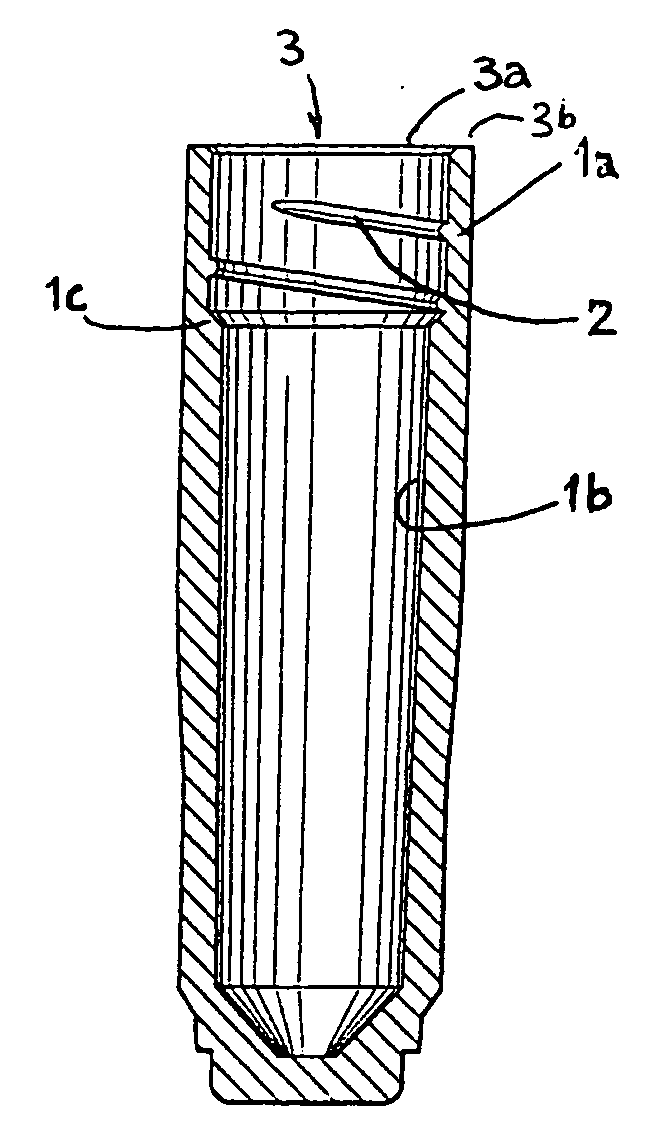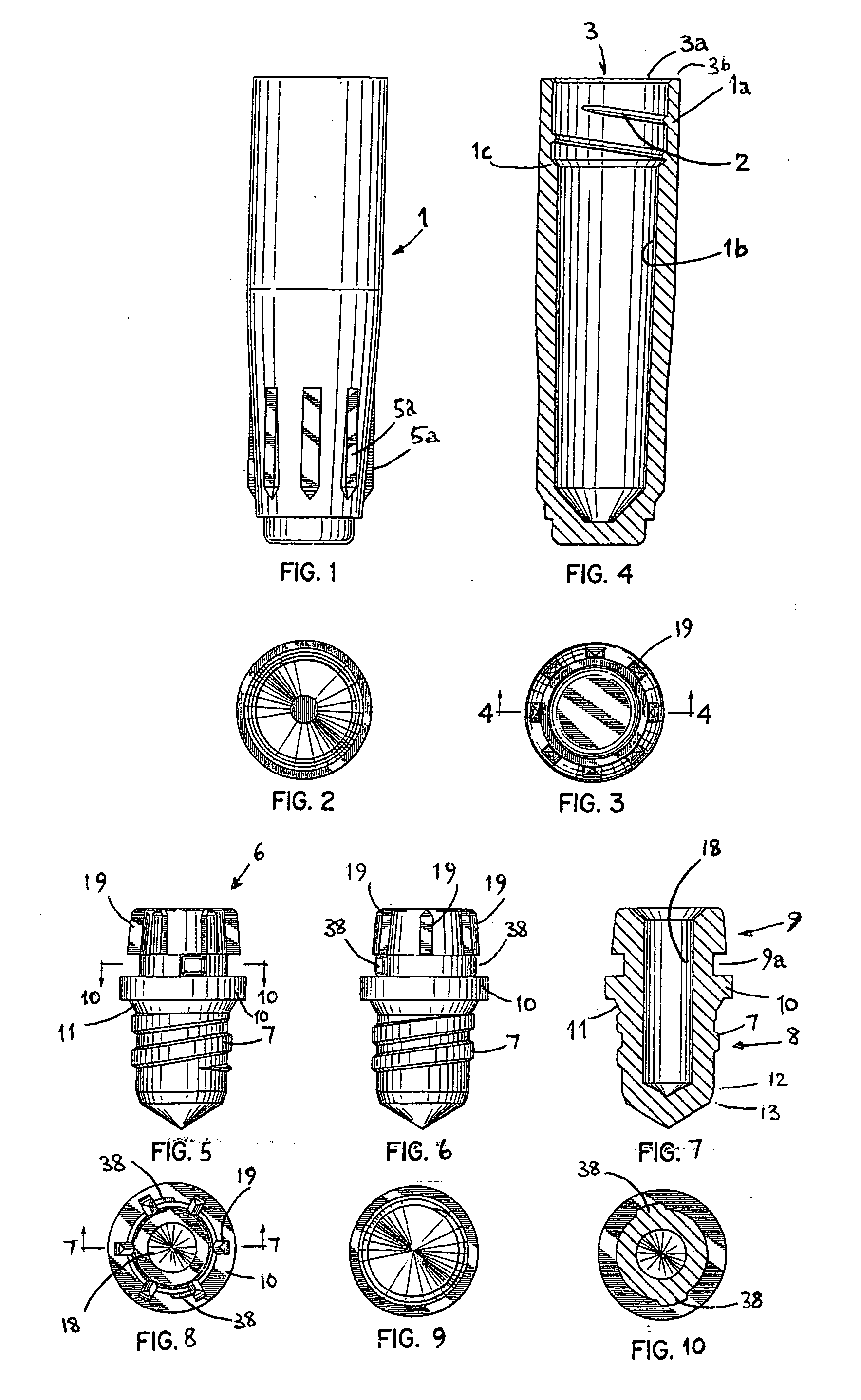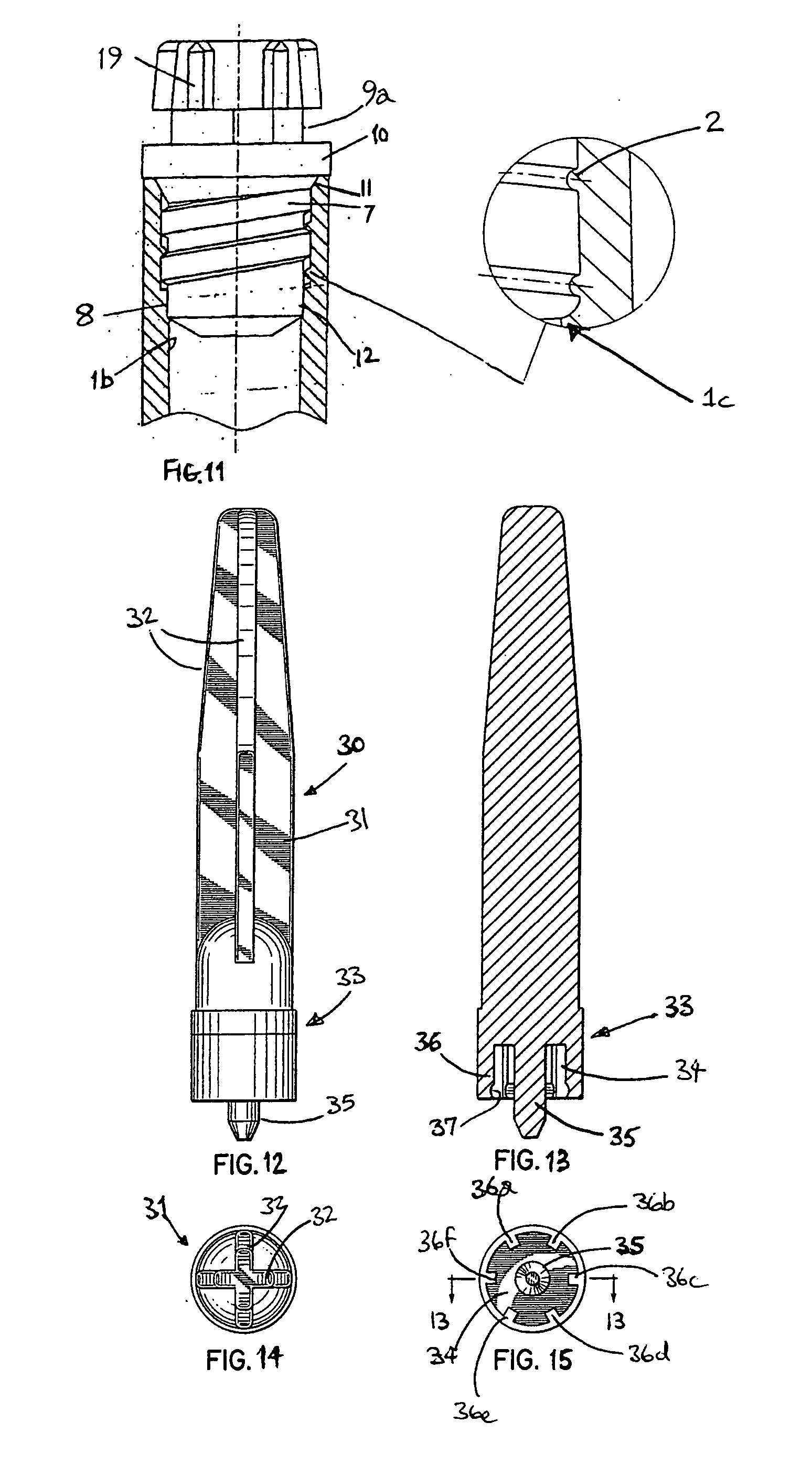Capped tubes
a technology of capped tubes and caps, which is applied in the field of capped tubes, can solve the problems of substantial problems in maintaining the seal integrity of the cap to the tube, polypropylene, and a comparatively high coefficient of thermal expansion
- Summary
- Abstract
- Description
- Claims
- Application Information
AI Technical Summary
Benefits of technology
Problems solved by technology
Method used
Image
Examples
Embodiment Construction
[0054] Referring to the Figures, the tube 1 shown in FIGS. 1 to 4 is moulded of polypropylene and having a screw thread formation 2 moulded at its upper end / mouth end 3. The rim of the opening of the tube 1 at the mouth end 3 has an upper end surface 3b and is recessed / part cutaway immediately around the opening to define a frusto-conical surface 3a at the entrance to the bore of the tube 1 against which an upper end of the cap 6 may seat.
[0055] From the mouth end 3 to the opposing closed base end 5 of the tube 1, the bore of the tube 1 tapers inwardly in stages. An upper portion 4 of the tube 1 that incorporates the screw thread formation 2 is of substantially uniform internal diameter but below this screw threaded portion 4 the bore is instepped 1c or begins to taper inwardly. The external profile of the tube also tapers inwardly towards the base end 5 and is provided with an array of longitudinally extending ribs / splines 5a around its outer circumference proximate the base end 5...
PUM
 Login to View More
Login to View More Abstract
Description
Claims
Application Information
 Login to View More
Login to View More - R&D
- Intellectual Property
- Life Sciences
- Materials
- Tech Scout
- Unparalleled Data Quality
- Higher Quality Content
- 60% Fewer Hallucinations
Browse by: Latest US Patents, China's latest patents, Technical Efficacy Thesaurus, Application Domain, Technology Topic, Popular Technical Reports.
© 2025 PatSnap. All rights reserved.Legal|Privacy policy|Modern Slavery Act Transparency Statement|Sitemap|About US| Contact US: help@patsnap.com



